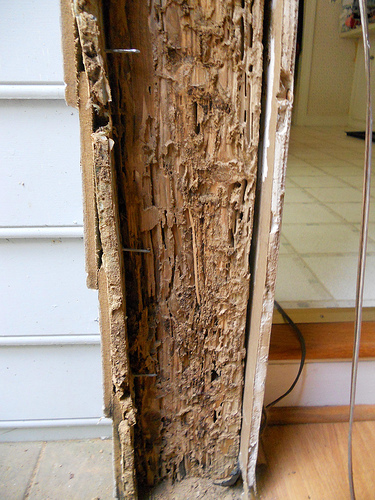
In a previous blog, we learned that not all termite species are considered “pests”, but only those that negatively impact humans get that label. But how does a handful of species become pests, while the rest don’t. All termite species eat wood and cellulose products, a type of food that most other animals cannot digest. In a natural setting, dead trees, fallen leaves and other plant materials are eaten and broken down by termites and other wood-boring insects. The process goes on with the help of other organisms…








